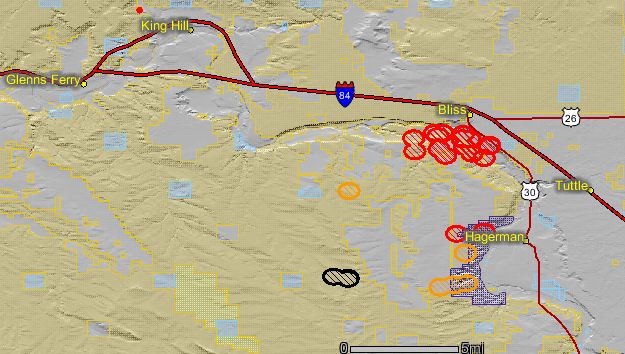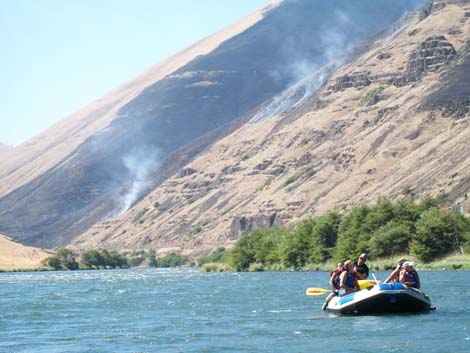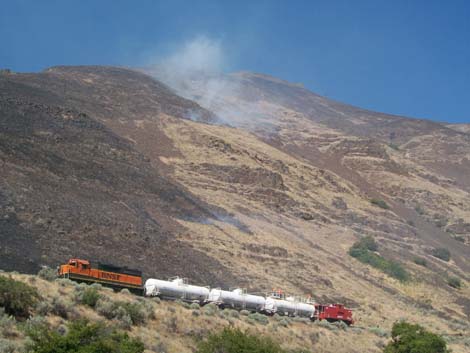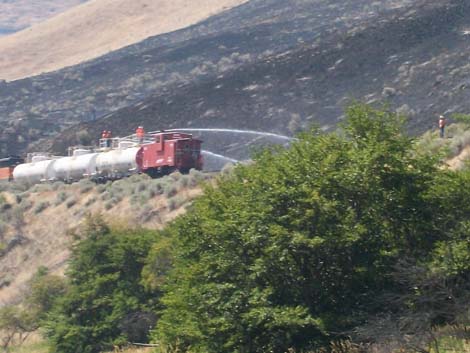Four very large fires are burning in Idaho, Oregon, and British Columbia. We’ll start with the largest and work down.
The Long Butte fire started at about 4 p.m. Saturday, 30 miles south of Glenns Ferry, Idaho. It has now burned 215,000 acres including most of Hagerman Fossil Beds National Monument near Hagerman, ID, requiring the closure of the facility. Type 3 Incident Commander Jeff Bedke of the BLM was quoted as saying that at one point the fire was moving across the landscape at 30 mph. Whalens Type 2 Incident Management Team was expected to assume command of the fire at 6 a.m. Monday. (UPDATE @ 2:00 p.m. Aug. 24)

Two fires in British Columbia, the Binta Lake fire southeast of Burns Lake, and a fire near Cassiar, have burned 99,000 and 86,000 acres respectively. The Binta Lake fire has been burning since July 28. There is optimism that the highway north of Cassiar that connects BC with the Yukon will be opened today after being closed for most of the month because of the fire. Lower temperatures and higher humidities have slowed the spread of the fires in recent days. Both fires are about 20% contained.
The White Lightning Complex on the Warm Springs Reservation, 15 miles north of Warm Springs, Oregon has burned 24,397 acres of dry grass, sage, juniper and pockets of pine and oak in rocky, rugged terrain.
A train with three tank cars of water and a pumping system was used along a railroad to help suppress the fire. Is there a task book to become qualified as Train-Pulled Fire Suppression System Operator? (See the photos below.)
(UPDATE: Aug. 24, 2010. HERE we explore in detail the concept of fire trains.)

More about the White Lightning fire from InciWeb:
Two cabins were lost in the Dent area, and eight cabins were evacuated and are at risk. The Deschutes River is closed to rafting from Warm Springs to Maupin. 100-plus rafters are stranded upriver above active fire. Further evacuations are in progress on the east side of the Deschutes River.
Below are some photos taken by one of the rafters that was forced to evacuate, including pictures of the train fire suppression system. We don’t know the name of the photographer, but all 12 of their photos can be seen at KGW.com.




I have been a seasonal fire fighter for 3 years and have never seen this, but have heard about it. Is this a common practice in this area, as they already have the set up? Either way, it’s pretty cool and inventive.
The lack of MODIS detections for the Long Butte fire is not only light fuels that cooled quickly, but the fast moving fire. MODIS is on an orbit that allows it to pass overhead a few times a day so if the fire is cruising along the landscape (such as 30 mph!), MODIS just isn’t fast enough to pick up all that activity. We saw the same thing happen in 2007 with the Milford Flat fire in central Utah. It burned 300,000 acres but burned so quickly MODIS only got about half the fire between its orbit overpasses.